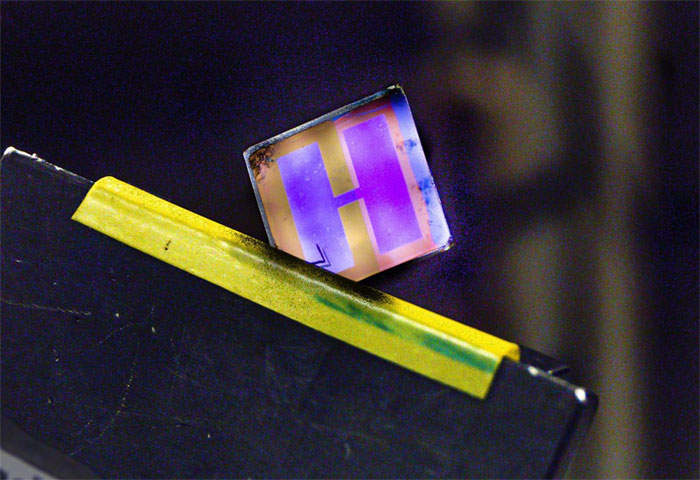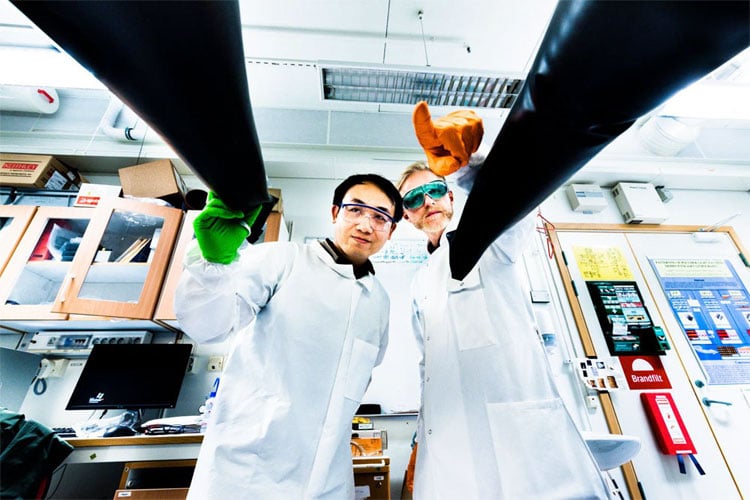
High-Performance Organic Photovoltaic Cells Developed for Indoor Use
LINKÖPING, Sweden, Sept. 25, 2019 — Scientists from Linköping University, the Chinese Academy of Sciences, and the University of Science and Technology Beijing have developed organic solar cells that can convert ambient indoor light to electricity. Although the power produced by the solar cells is low, the scientists believe it could be enough power to support the many products that the Internet of Things will bring online.

The organic solar cell, optimized to convert ambient indoor light to electricity. Courtesy of Thor Balkhed.
The researchers developed a new combination of donor and acceptor materials to use as the active layer in an organic solar cell. The new composition — a nonfullerene acceptor blended with a polymer donor — supported the development of a photoactive layer whose absorption spectrum matched that of indoor light sources. Photovoltaic characterizations of the new solar cell revealed a low energy loss below 0.60 eV.
The optimized organic photovoltaic cell, with an area of 1 cm2, showed a power conversion efficiency of 26.1% with an open-circuit voltage of 1.10 V under an LED illumination of 1000 lux (2700 K). A large-area cell with an area of 4 cm2, fabricated using the blade-coating method, exhibited a high degree of stability, maintaining its initial photovoltaic performance and delivering a high voltage of above 1 V while under continuous illumination of the indoor light source for 1000 hours in ambient light that varied between 200 and 1000 lux. The larger solar cell maintained an energy efficiency of 23%.

Yuming Wang and Jonas Bergqvist, researchers in the laboratory at Linköping University. Courtesy of Thor Balkhed.
“We are confident that the efficiency of organic solar cells will be further improved for ambient light applications in coming years, because there is still a large room for optimization of the materials used in this work,” said professor Jianhui Hou from the Chinese Academy of Sciences.
Organic solar cells are flexible, cheap to manufacture, and suitable for manufacture as large surfaces in a printing press. The light-absorbing layer of organic solar cells, which consists of a mixture of donor and acceptor materials, provides flexibility so the cells can be tuned and optimized for different spectra. This new approach to powering indoor applications could provide the Internet of Things with an inexpensive source of renewable energy, potentially replacing batteries.
The research was published in Nature Energy (https://doi.org/10.1038/s41560-019-0448-5).
Published: September 2019